
Five Tips for Maximizing Your Patient Panels
As a marketer, it has always been a priority of mine to learn as much as I can from customers to gain market perspectives. As a chronic illness patient, I recognize that being an end user makes me, along with others in my disease population, primary customers who offer a critical perspective in shaping brand strategies, communications, and campaigns.
It has taken the industry some time to fully recognize this, but patient empowerment and access to information have increased exponentially, replacing outdated relationships where HCPs make decisions that patients simply abide by. Companies that haven’t incorporated patient perspectives are effectively left behind. It’s not a luxury to have patients represented at your table. It’s table stakes if you really want to reach them and be relevant.
Of course, patient perspectives aren’t an unlimited resource. It’s crucial to respect their time and maximize their input when they are available to participate. Here are some top tips for how to achieve that by arranging mutually rewarding patient engagement panels, councils, or collaborative meetings.
#1. Never underestimate who you have at the table.
Disease doesn’t discriminate (don’t come at me, geneticists!) Ethnographics aside, there are people living with chronic, rare, or terminal diseases from all walks of life. That often translates into smart, accomplished stakeholders. They don’t show up to be underestimated, babied, or talked down to; they pull from a range of professional backgrounds and contribute at a high level.
Don’t be afraid to ask hard questions, collaborate, or challenge the participants. Set up a space that is safe, and one of mutual, high-level respect. Also, consider involving patients earlier and keeping them involved for longer. You might be surprised about the interest and insight that this group brings, even when you’re in early development. Finally, don’t use this group only to validate, they will leave feeling like a mere checkbox, instead of a valued voice using lived experiences to enact change.
In reality, patients often take more of an interest in the big picture than you might expect. Even lay patients (and yes, there are loads of Ph.D., M.D., MS, and other professional-level patients) like to see behind the curtain, all the way back to things like diagnostic technologies, pipeline research, delivery technologies, and leveraging data, to name a few.
When we’re all working toward the same goal of enacting better, faster, accessible tools to address disease, keeping an open line of communication raises the potential for better, earlier, more impactful lightbulb moments.
#2. Your grind looks different than the patient grind.
Your patients are at the table because they are, indeed, patients. As a hard-working industry leader, you may be used to the grind — long days and late flights, but anything even close to that may be enough to drain a patient’s proverbial battery, and render them unable to participate productively – or at all.
Even as high-performers and sharp contributors, every disease impacts patients in different ways – but hardly any patient is without impact. If top leadership touts patient-centricity but disregards their needs during a panel, the hypocrisy will be swiftly noted and likely shared among peers.
Some things to consider may be:
-
- Travel impact: How long or far are they able to travel? Can they get through an airport on foot? Will they need a direct flight? Will they need an extra night to recover? Having a chronic illness patient travel from rural Idaho to Philadelphia might involve 3 flights and wheelchairs in 4 airports, resulting in fatigue that prevents them from contributing fully – or even making the sessions at all.
- Meals: Meal planning may be obvious for groups such as Diabetes or Celiac, but when it comes to selecting foods to offer your patients, there’s a lot more to consider across so many conditions. While you’re layering up healthy salads, inflammatory bowel disease (IBD) patients may require a low-residue diet. Rheumatoid arthritis patients may need food options that don’t involve opening things such as jars. If you’re not sure, simply ask patients for dietary restrictions or have them review logistics in advance.
- Lodging: Hotel consideration goes far beyond the potential need for handicapped rooms and showers. In-room refrigerators might be necessary for medications or specific foods. Room service might be the only feasible way to get a good meal, especially for those who are mentally, physically, and socially tired after a day of meetings. Again, all you have to do is ask the patients you’re collaborating with.
#3. Maintain transparency during and after the process.
Patients are showing up and contributing because they feel a great sense of purpose, but they are also showing vulnerability and sharing parts of their lives where they feel inadequate, embarrassed, or traumatized.
It’s disheartening to sit through hours or days of panels and workshops, to never see or hear about the output. Where did all that wisdom go? Was my input for nothing? Can I take my thoughts and reuse them elsewhere, because surely they are impactful?
Be purposeful and transparent throughout the process. Update them on review and approval statuses and listen actively to their feedback. Let them know about milestones and launch dates. Alternatively, if there’s a delay or the project stops prematurely, let them know the status and reason. It’s better to hear “This has been paused for budgetary reasons and we’re not sure if it will get funded again or not” than crickets.
Not only is keeping patients apprised respectful, but it builds a long-term, trusting relationship and an important feedback loop with those who have a deep understanding and connection to the project and are positioned to provide rich, nuanced input.
#4. Manage the process to get the most out of a limited capacity.
I will never forget the time I was in a patient council session with the goal of brainstorming a purpose statement. We spent 10 minutes talking about the price of tolls on the way to the hospital. Important? Yes. But in that moment? Absolutely not.
Sometimes it feels like meeting facilitators are afraid to ruffle patient feathers, and because of that, tangents are left to run their course. As someone who has sat through more than just one sidetracked panel, I find it critical for meetings to be managed properly.
Here are some tips and why they matter:
-
- Keep the sessions on topic. I get it, patients have an insurmountable amount to deal with, and while it’s important to be empathetic, it’s also important to stay on task and not ebb into support group territory. Patients who end up sitting and listening while their relevant feedback simmers may get frustrated – and if this is a regular tone for your meetings, they may decline to come back because they feel like their time has been wasted.
- Manage dominant voices. Not specific to patients, but there will always be some voices that dominate and some that struggle to be heard. Don’t abandon the regular tactics like calling on people, using breakout groups, or writing activities vs. open discussions to ensure you’re getting a full range of input.
- Make the effort worth it by maintaining balance. Later start times and generous breaks are often necessary to balance the fatigue of traveling, sitting, and engaging. Many events may also offer a “break room” for relaxing or recharging. Prep work and post work are also an effective way to gather input or feedback to offset the mental lift that happens during the meeting.
- Consider breaking long meetings into multiple days. In addition to creating a more manageable schedule, it’s important to consider the payoff vs the effort. Traveling across the country for a 3-hour meeting doesn’t seem worth it, but neither does traveling and then sitting in long, tedious sessions. Striking a balance between the two helps optimize the effort patients are putting in vs. what you’re getting out of it. If you’ve scheduled all the sessions you need and there’s time left over, consider adding something with therapeutic vibes like an art lesson, meditation session, or charity block.
#5. Remember that as passionate as you are about your job, this is their life. Patients are intelligent, empowered, and — rightfully so — opinionated. The decisions that result from patient input may move your KPIs, but they may also have a direct and significant impact on their quality of life, their hope for survival, and the course of the future for them and their broader disease communities. Respect the fact that although goals may be similar, they are differently motivated and hardly ready to compromise.
Patients find a lot of extra benefits when attending meetings. Many feel a sense of purpose and feel like they have a little more control over their future on a large scale. Cue the time I learned a clinical trials FDA regulation had been changed based on a panel discussion I was on.
This also may be the first time they have met other patients with a similar lived experience. Respect this greatly and give informal or formal space for these relationships to take hold. Unless you have also lived something similar, know that there is nothing more valuable than connecting with another whose story mirrors yours, and there is nothing more powerful than impacting industry direction — together. You want that momentum on your side.
Bonus: Compensate them. At fair market rates.
